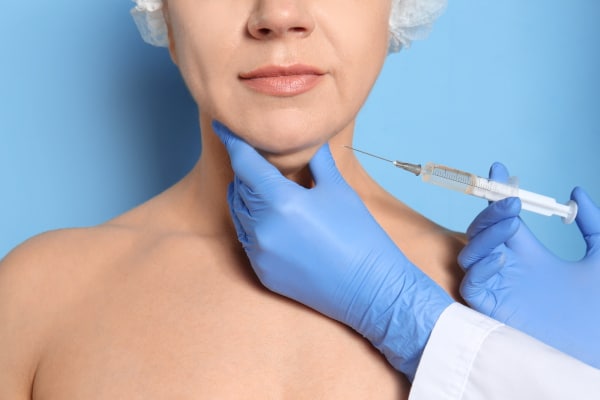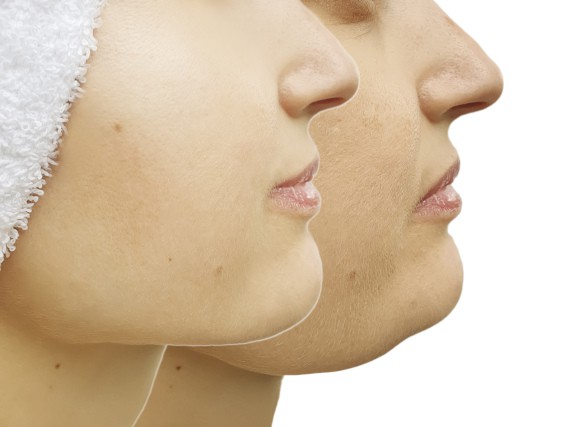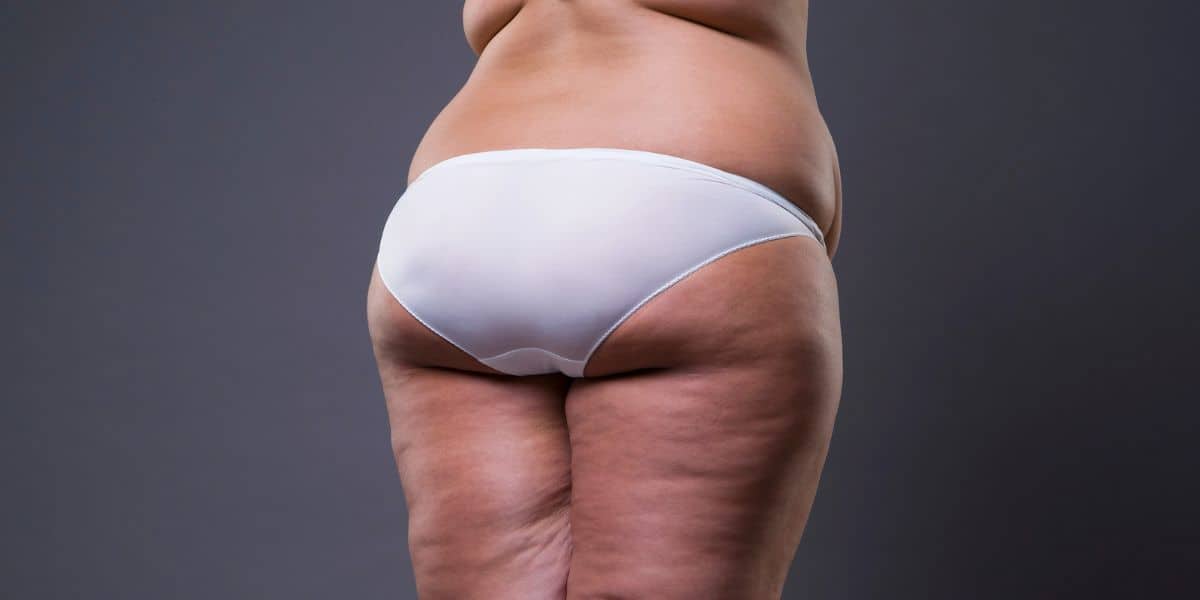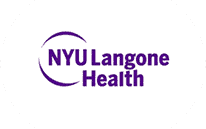Dr. Saber’s Blog
Kybella vs Liposuction: How to Get Rid of a Double-Chin
Thanks to ever-present cameras and social media reels, we are now more likely to spot the slight peculiarities that define our facial shapes. Unfortunately, many of these can turn an otherwise perfect photo into a source of self-consciousness.
One of the most common culprits is the “double chin,” or fat accumulation around the chin or upper neck.
Known by doctors as “submental lipolysis,” double chins are generally undesirable and associated with weight gain. In reality, having extra fat cells in that area is mainly genetic. This is why you can see many slim celebrities and hyper-fit athletes with the occasional double chin – although most will make sure not to post any pictures showing one!
Plastic surgery now offers many different treatments against submental fullness. The two most popular ones right now are neck liposuction and Kybella treatments. While commonly pitted against each other, both have their pros and cons – so make sure you study the available options carefully. During your consultation, we can make sure you’re picking the best treatment for your goals.
What is Kybella?
Kybella is a patented, FDA-approved treatment used to destroy fat cells in a specific area. This is done using deoxycholic acid injections around the chin and neck area.
How does Kybella get rid of fat?
Deoxycholic acid is a natural bile acid, the body naturally produces it to help with digestion. In the stomach and intestines, its main job is to help break down fats before they can be digested.

During a Kybella treatment, a purified version of this acid is injected in specific spots under your chin and neck. The acid will slowly start melting away the fat cell’s outer layer, releasing the fat inside.
This will make fat cells shrink progressively over several months. Eventually, they will be destroyed entirely and provide you with permanent results.
Kybella is usually delivered in sessions of about half an hour each, every six to eight weeks. These are very similar to Botox sessions: the doctor will first mark the sites that need to be shrunk and then inject the Kybella right below your skin.
On average, most patients need six sessions to achieve permanent results.
Recovering from Kybella
One of the main advantages of Kybella injections is that they require almost no downtime. Most patients experience minor swelling or redness from the injections after each session, but no major side effects.
While the redness may show up in any close-up pics you take that day, you will likely be able to return to work that same evening.
In sporadic cases, neck swelling can make it difficult to swallow. This side effect goes away with Panadol and rest.
Which is better, Kybella or liposuction? In truth, there is no simple answer to this question.
What about liposuction?
Liposuctions are a well-established, but more invasive, cosmetic procedure. Liposuctions can be done in almost every part of the body where fat accumulates.
Can you get rid of the genetic double chin with liposuction?
To eliminate fat deposits around the jawline and chin, we use a procedure known as submental liposuction. This is done under heavy sedation or general anesthesia. During this procedure, we will start with a series of small incisions behind each ear and along the neck. Then, we will insert a cannula, or a very slim tube, to vacuum the fat away.
Following a liposuction procedure, you will see a significant difference almost immediately. As soon as the swelling goes down, patients will be able to see the final results. These are considered permanent, although the fat deposits may grow back if you gain significant weight.
Recovering from liposuction
Neck liposuction is a surgical procedure requiring a longer recovery time. If done under general anesthesia, you may need to stay under observation overnight until you wake up completely. Then, you will need to wear a dressing or compression bandage around your neck for 10 to 14 days.
You may need painkillers or anti-inflammatory medication during the first couple of days after liposuction. You will also need to be careful to prevent infection at the incision site.
CALL (818) 770-7050 OR CLICK HERE TO SCHEDULE ONLINE
Kybella Vs. Liposuction – not a one-size-fits-all issue
So, after all this information, most patients want the simple answer: which is better, Kybella or liposuction? In truth, there is no simple answer to this question. It will depend on your priorities, feelings about injections or surgery, and even your timeline.
In general, Kybella is ideal for anyone who:
- Is scared of anesthesia
- Has any pre-existing conditions that make anesthesia more dangerous
- Have limited time off or don’t want to sacrifice their holidays for an elective surgery
- Are seeking a more “gradual” change and can afford to wait for the final result.

On the other hand, Kybella treatments may not suit you if you are impatient or anxious about the final results. If your job requires frequent traveling, you may find it harder to stick to regular appointments over several months.
So is neck lipo worth it? For you, it may be. Liposuction tends to be better for anyone who:
- Prefers to work with a set budget and timeline
- Is nervous about an injectable treatment while awake
- Has a larger amount of fat to remove or wants to do another procedure (such as a neck lift) at the same time
- Needs to get rid of their double chin before a specific date (for example, a wedding)
Kybella vs lipo cost
A common source of confusion is the cost of each one of these procedures. At first glance, Kybella is significantly cheaper than liposuction – you won’t have to cover the cost of an operating room, anesthesia, or any of the pre-op testing.
However, you should remember that Kybella treatments are usually quoted as a round of two sessions. A few weeks after each session, you’ll need to return to the office for us to assess the progress and determine whether you’ll need another round.
Depending on how much unwanted fat you are sculpting away, it may be hard to predict the number of sessions needed. Most people need up to six sessions. If you need more than that, the total cost of Kybella will likely surpass that of liposuction.
Ready to decide between chin lipo vs Kybella? Dr. Saber is with you!
Dr. Sepideh Saber’s, MD, FACS, approach to cosmetic surgery combines extensive experience and an empathetic female perspective. This helps her understand the unique needs and anxieties of each patient.
She is a Stanford University-trained board-certified plastic surgeon who has completed residencies at the University of Southern California and New York University.
Patients from all walks of life have found her a valuable ally for their health and self-esteem. She provides various procedures such as rhinoplasties, breast augmentations or reductions, and facelifts. She can also help patients remove old fillers or help them tailor a plan to improve their skin elasticity
To request a consultation, call (877) 205-4100 or click here to schedule a consultation online.
We serve patients in Encino, Woodland Hills, Sherman Oaks, Calabasas, Burbank, Glendale, Hidden Hills, Agoura Hills, Northridge, North Hollywood, Malibu, Topanga, Canoga Park, Reseda, Valley Glen, Chatsworth, West Hills, Winnetka, Universal City, Bel Air, Beverly Hills, Downtown Los Angeles, Silverlake, and Echo Park.
- The Skinny on BBL Sagging: Why It Happens and How to Prevent It - April 29, 2025
- Recovering From a Mommy Makeover: Dr. Saber’s Week-by-Week Guide - November 29, 2024
- Male Chin Augmentation: Is it For You? - October 25, 2024

























